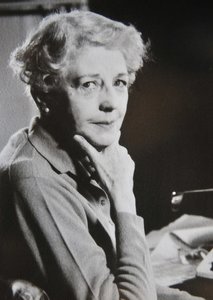
Alan Sillitoe FRSL was an English writer and one of the so-called "angry young men" of the 1950s. He disliked the label, as did most of the other writers to whom it was applied. He is best known for his debut novel Saturday Night and Sunday Morning and his early short story "The Loneliness of the Long Distance Runner", both of which were adapted into films.
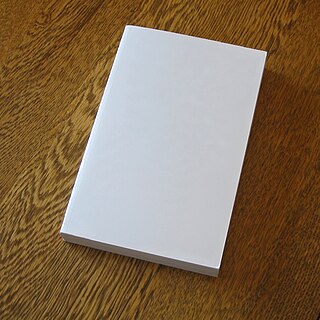
A paperback book is one with a thick paper or paperboard cover, and often held together with glue rather than stitches or staples. In contrast, hardback (hardcover) books are bound with cardboard covered with cloth, leather, paper, or plastic.
Doubleday is an American publishing company. It was founded as the Doubleday & McClure Company in 1897. By 1947, it was the largest book publisher in the United States. It published the work of mostly U.S. authors under a number of imprints and distributed them through its own stores.
David John Morris is a British author of gamebooks, novels and comics and a designer of computer games and role-playing games.
Edward Michael Bankes Green was a British theologian, Anglican priest, Christian apologist and author of more than 50 books.
Edmund Cooper was an English poet and prolific writer of speculative fiction, romances, technical essays, several detective stories, and a children's book. These were published under his own name and several pen names.

Gillian Honorine Mary Herbert, Baroness Hemingford,, known professionally as Jill Paton Walsh, was an English novelist and children's writer. She may be known best for her Booker Prize-nominated novel Knowledge of Angels and for the Peter Wimsey–Harriet Vane mysteries that continued the work of Dorothy L. Sayers.
Hodder & Stoughton is a British publishing house, now an imprint of Hachette.

Paul Stewart is a writer of children's books, best known for three series written in collaboration with the illustrator Chris Riddell: The Edge Chronicles, the Free Lance novels, and the Far Flung Adventures series.
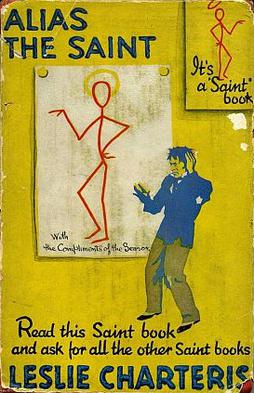
Alias the Saint is a collection of three mystery novellas by Leslie Charteris, first published in the United Kingdom in May 1931 by Hodder and Stoughton. This was the sixth book to feature the adventures of Simon Templar, also known as "The Saint". The three stories had previously been published in The Thriller magazine in the UK.
Claude Voilier was a French teacher, journalist, translator, and a prolific author, having written over 600 short stories for various French magazines, and about 400 stories for children. In the English-speaking world, she is best known for her continuation of Enid Blyton's The Famous Five series of children's adventure novels.
This is a bibliography of works by Damon Knight.
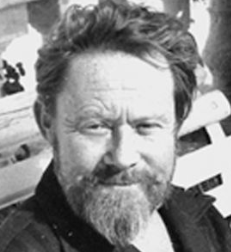
Ernle Dusgate Selby Bradford was a noted 20th-century British historian specializing in the Mediterranean world and naval topics. He was also an authority on antique jewellery and was the founder editor of the Antique Dealers and Collector's Guide.

Random House of Canada was the Canadian distributor for Random House, Inc. from 1944 until 2013. On July 1, 2013, it amalgamated with Penguin Canada to become Penguin Random House Canada.

Stanley Morgan was an English writer and actor. He wrote fiction, in the comedy and thriller genres and had more than 40 books published between 1968 and 2006.
Arthur R.G. Solmssen was an American lawyer and novelist.
Margot Peters was an American novelist and biographer, including of Charlotte Brontë, George Bernard Shaw, Mrs. Patrick Campbell, the Drews and Barrymores, May Sarton, Alfred Lunt and Lynn Fontanne. She was a recipient of the Ambassador Book Award.
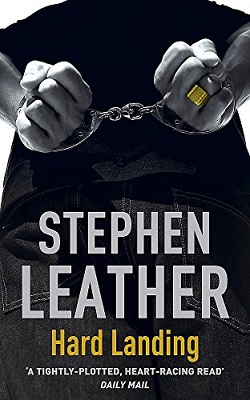
Hard Landing is a 2004 thriller novel by British author Stephen Leather. Published in 2004 by Hodder & Stoughton, it is the first book in the Dan ‘Spider’ Shepherd series. Hard Landing is an international bestseller and is available in ebook and paperback.
Jeffrey Meyers is an American biographer and literary, art, and film critic.
John Collis Snaith was an English first-class cricketer active 1900 who played for Nottinghamshire. He was born in Nottingham; died in Hampstead. He was also a novelist, writing as J. C. Snaith, and played in the Authors Cricket Club alongside fellow authors A. A. Milne and P. G. Wodehouse among others.
